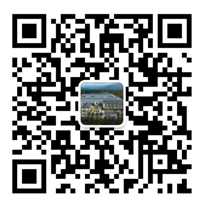V-belt transmission system: classification, structure, and performance analysis
V-belt, also known as V-shaped transmission belt, is a type of circular transmission belt mainly used for the transmission of mechanical power. Its name comes from its unique trapezoidal cross-section design. The following content will provide a detailed introduction to the classification, structure, advantages and disadvantages, as well as application areas of V-belts.
V-belts can be classified into the following categories based on their cross-sectional shape and size:
1. Ordinary V-belt: suitable for conventional industrial applications, with high transmission efficiency and long service life.
2. Narrow V-belt: designed for situations with large load fluctuations and harsh working environments, it has high load-bearing capacity and a longer lifespan.
3. Wide V-belt: Suitable for applications that require larger transmission ratios.
4. Multi wedge belt: composed of multiple V-belts, used for high-power transmission requirements.
The structure of a V-belt typically includes the following parts:
-Wrapping layer: provides necessary protection and wear resistance.
-Stretch adhesive layer: endows the belt with elasticity and stretchability.
-Strong layer: composed of high-strength materials, responsible for the main tensile strength.
-Compression adhesive layer: Ensure the compressive performance and stability of the tape body.
The advantages of V-belts include:
-High transmission efficiency: The transmission efficiency of V-belts is generally between 90% and 97%.
-Smooth operation: As a seamless circular belt, the V-belt can significantly reduce vibration and noise during the transmission process.
-Easy to install and maintain: The manufacturing and installation accuracy requirements of the V-belt are not strict, maintenance is simple, and no additional lubrication is required.
-Overload protection: In case of overload, the V-belt will slip on the pulley, thereby protecting the mechanical equipment from damage.
However, the V-belt also has some drawbacks:
-Inaccurate transmission ratio: Due to the elastic sliding between the belt and the pulley, there may be deviations in the transmission ratio.
-Relatively short service life: Compared to other transmission methods, the service life of V-belts may be shorter.
-Not resistant to high temperatures: In high temperature environments, V-belts are prone to aging and damage.
Application field:
V-belts are widely used for power transmission in various types of mechanical equipment, such as:
-Electric motors and internal combustion engines: drive various mechanical devices.
-Textile machinery: used for power transmission and item transportation.
-Machine tool: Provides power for various processing equipment.
-Agricultural machinery: the power transmission of equipment such as tractors, harvesters, etc.
In summary, V-belts have become an indispensable component of mechanical transmission systems due to their high efficiency, stability, and easy maintenance. Reasonable selection and use of V-belts can significantly improve the efficiency and service life of mechanical equipment.
-
 Email:wanss@kusan-if.com
Email:wanss@kusan-if.com
-
 website:www.kusan.cn
website:www.kusan.cn
-
 business address one:No. 3, Futai Road, Lancun Town, Jimo District, Qingdao, Shandong business address two:No. 99, Fengjin Road, Shangma Street, Chengyang District, Qingdao, Shandong
business address one:No. 3, Futai Road, Lancun Town, Jimo District, Qingdao, Shandong business address two:No. 99, Fengjin Road, Shangma Street, Chengyang District, Qingdao, Shandong

Scan the code
Copyright © 2020-2030 www.kusan.cn Qingdao Jiushan Textile fabric Co., Ltd. All Rights Reserved
website:www.kusan.cn address:No. 3, Futai Road, Lancun Town, Jimo District, Qingdao, Shandong ICP Certificate: ICP Lu No. 20021986-1

 简体中文
简体中文 Japanese
Japanese 한국어
한국어
